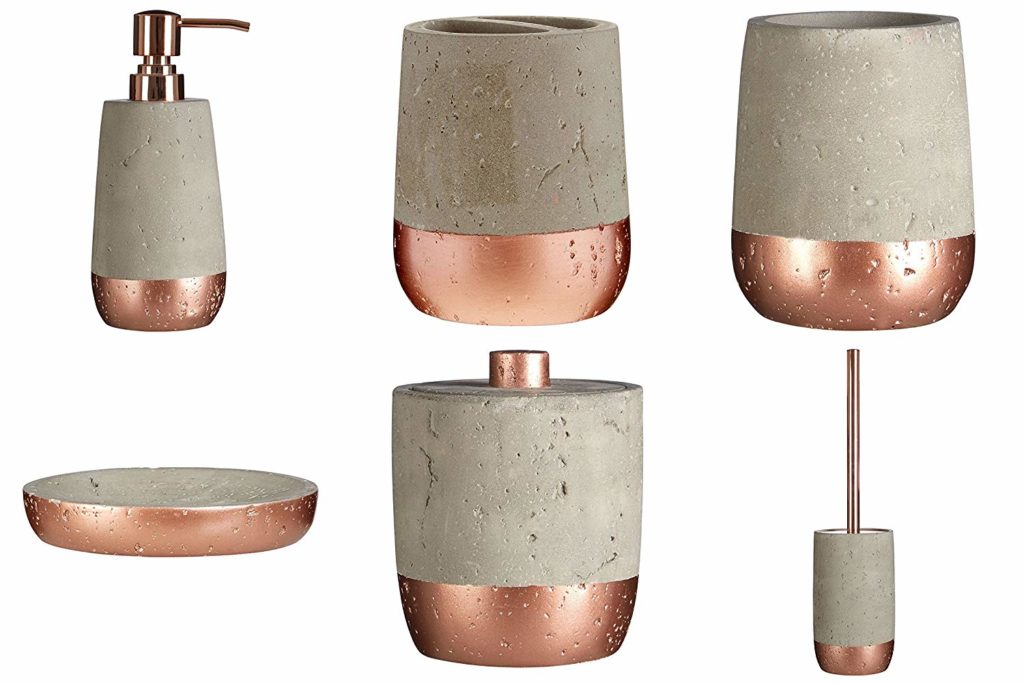Bathroom Design Cement
Why using microcement and concrete in the bathroom is a great idea
Architectural concrete seems to have been created for use in the bathroom. It will successfully replace the tiles, it is also much cheaper and easier to install than natural stone. You can choose from architectural concrete slabs, cast tops and washbasins, or claddings of walls and microcement floors, and more recently – concrete interior design accessories such as e.g. soaps dishes. We're explaining why using microcement and concrete in the bathroom is such a good idea. Keep on reading.

Microcement bathroom: walls and floor
For some time on the microcement has been reigning in the interior design as the hottest bathroom trend. Among its advantages (in addition to its stylish appearance) we can mention durability, ease of application and cleanliness – there are no joints and the surface is smooth, so that no dirt and soap deposits are collected. What is more, the sealed microcement is completely waterproof, so it can be used in shower cabins and for finishing off line drains.
Here you can find most frequently asked questions about the microcement in the bathroom.


Australian architect Matt Woods has been specializing in architecture inspired by industrialism and brutalism for years. In this bathroom, he proposed a monochrome palette of colors based on gray and black, complementing it with fittings and golden hangers.

The bathroom in the luxurious Manzoni restaurant in Milan was designed by Tom Dixona, a British industrial designer, one of the most interesting figures in European design. When creating designs, inspired by factory rawness, Dixon primarily uses concrete, stone, metal and glass. The cool color tone is often broken by the warmth of brass and gold, as is the case with this bathroom.

Minimalism reigns in this spacious and bright bathroom. Thanks to the use of microcement on the walls and floor, a smooth, elegant jointless surface was obtained, which is an ideal background for heavily trimmed equipment. The center of the bathroom is a free-standing white bathtub, and the only additions are a wooden table and a hanger and a set of three hanging lamps. Project: Honey and Spice (Germany)

On the opposite side of the bathroom there are washbasins and a built-in shower. Project: Honey and Spice (Germany)

Microcement fits perfectly with wood that warms modern, minimalist interiors. The same applies to properly selected lighting (many light pspots). Design: Shariati Interior Design (Iran)

Bathroom wall coated with Festwall microcement in shade GR3 with a varnish of satin finish.

The rustic style of this bathroom is enhanced by a concrete bathtub and old boards. Project: Vincent Van Duysen

Microcement is not only shades of gray. This charming bathroom uses dusty pink Festwall microcement – see more photos.
Decorative concrete slabs in your bathroom
A good idea for the use of architectural concrete is to use concrete panels. They can be installed in virtually any firm structure. Their installation is fast and simple and is available in countless shapes and colors.

A completely amazing and very bold interior, in which concrete appears everywhere – on the walls, on the floor and on the ceiling. Project: SPASM Design Architects

Infallible combination of concrete and wood in a small bathroom.
Bathroom accessories made of architectural concrete
There are plenty of stylish concrete accessories on the internet. Many of them can also be made by yourself using a ready-mixed concrete mix.

Can the toilet roll holder be nice and stylish? The French have proved so. Cloud shaped toilet paper holder. Lyon Béton, 140 EUR

Concrete bathroom set. The set includes: a soap container, a brush holder, a mug, a soap dish, a container for cotton pads, a toilet brush holder. Amazon, 67 GBP

Bathroom soap set, soap container and brush cup. 2modern, from 116 USD
Concrete washbasins
Sinks made of architectural concrete are an unusual alternative to traditional ceramic washbasins. You can choose among freestanding washbasins, on top washbasins, round, rectangular …. sky is the limit!
In turn, a lighter alternative to concrete sinks are sinks covered with microcement. Usually, a structure is made of MDF, and then covered with a primer layer that gives adhesion and microcement in any color.

A sink made of decorative concrete made to order. Design: Sudio McGee

Impregnated and waterproof concrete sink. Pakamera, 120EUR

Countertop washbasin. Etsy, 503 EUR

Round countertop washbasin cast from decorative concrete. Magnus, 229 USD

The walls and countertop of the sink covered with microcement.
Microcement and concrete in the bathroom can be used in infinitely many ways. Thanks to our products from FESTFLOOR Life , FESTWALL and the archiFEST you can accomplish any, even the most extravagant idea. If you plan to use architectural concrete / microcement in your interior and you do not have installers who can make it done for you, we can recommend to you the professionals we work with. Don't hesitate to contact us.
This article is part of a series of publications on decorative concrete. If you liked it, read also the other posts:
- Concrete in the kitchen – 16 original kitchens with concrete. Inspirations
- Concrete living room decor ideas: microcement and decorative concrete
- Concrete and microcement bedroom inspirations you will fall in love with
- Trendy concrete wedding ideas
- Decorative concrete in the house: 5 amazing concrete houses
Source: https://www.festfloor.eu/blog/microcement-and-concrete-in-the-bathroom/

0 komentar:
Posting Komentar